
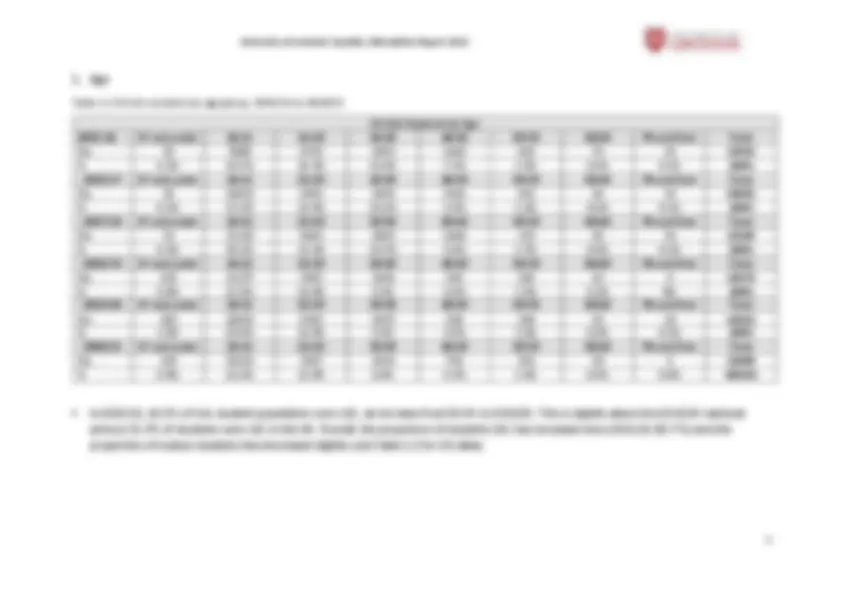
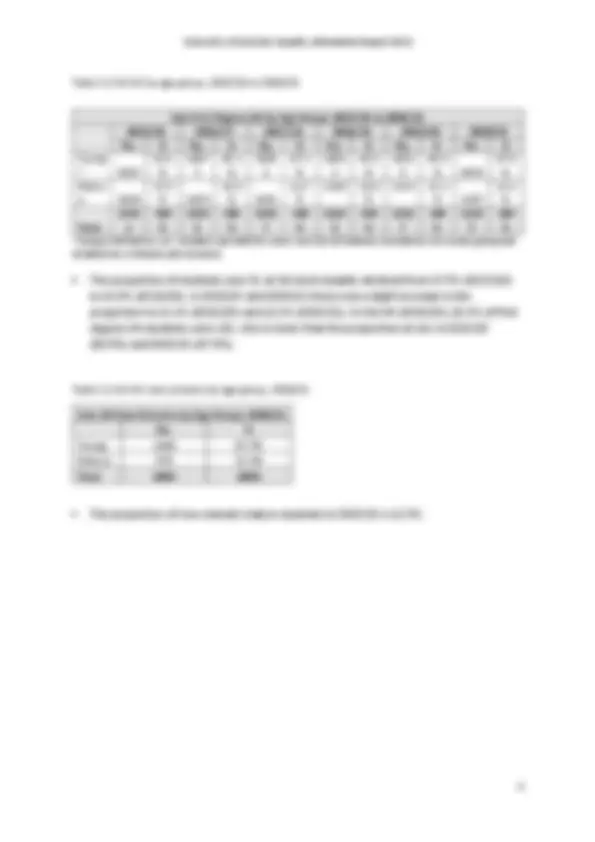
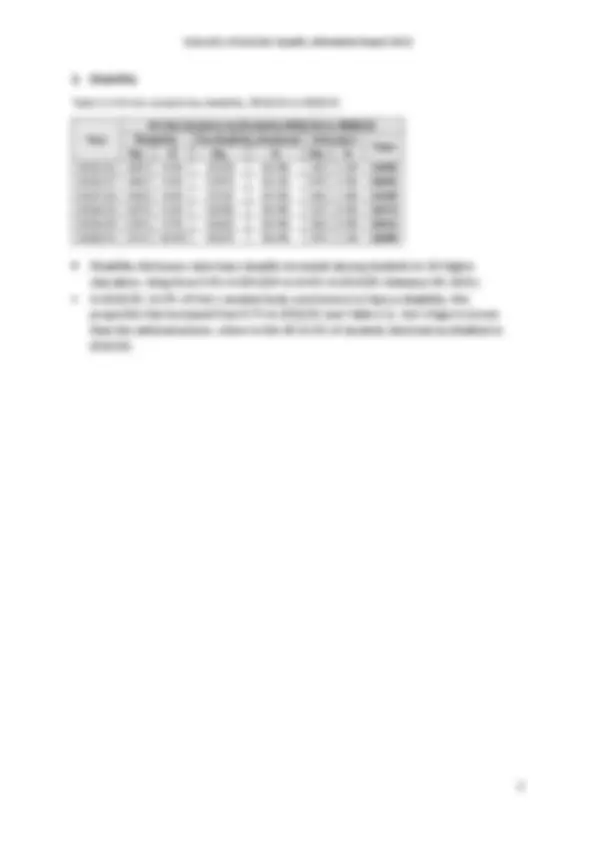
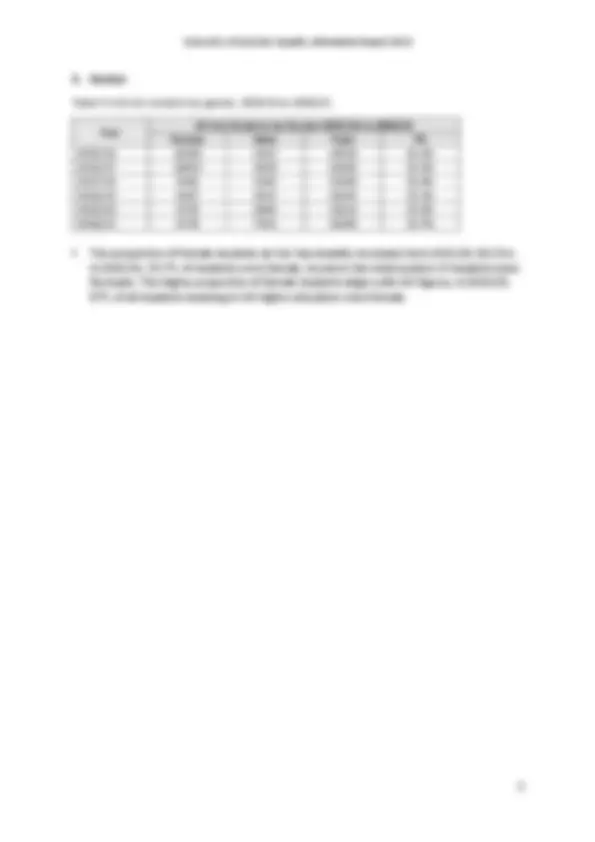
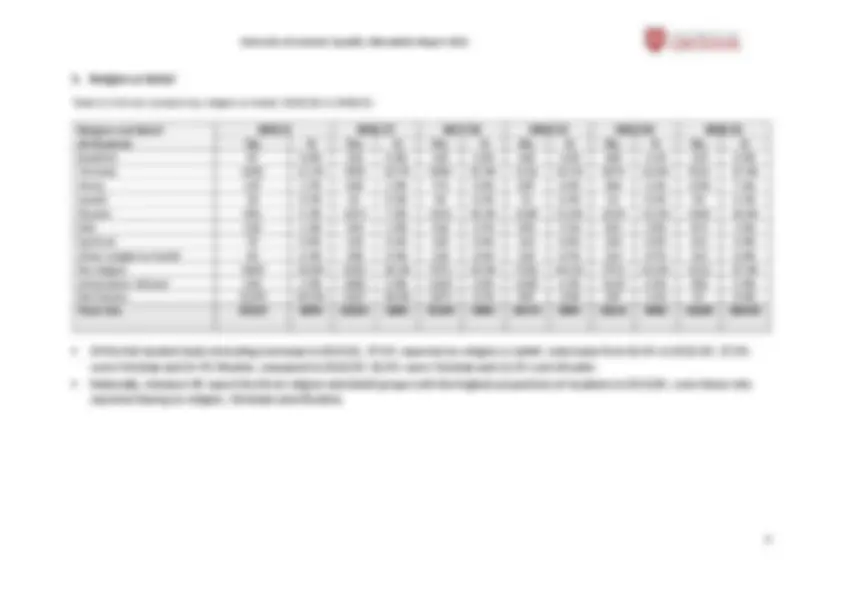
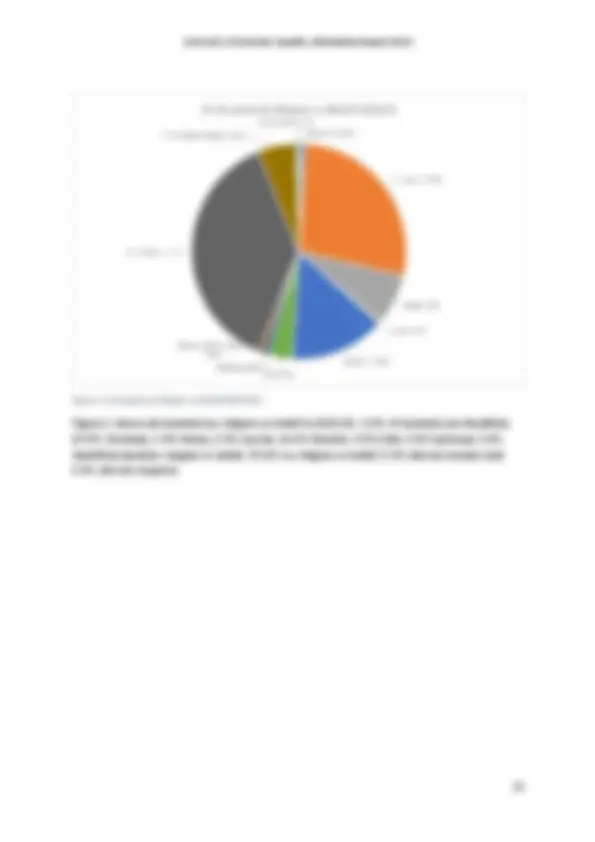


Study with the several resources on Docsity

Earn points by helping other students or get them with a premium plan


Prepare for your exams
Study with the several resources on Docsity

Earn points to download
Earn points by helping other students or get them with a premium plan
Community
Ask the community for help and clear up your study doubts
Discover the best universities in your country according to Docsity users
Free resources
Download our free guides on studying techniques, anxiety management strategies, and thesis advice from Docsity tutors
An overview of the student demographics and diversity at the University of Leicester based on data collected under the Equality Act 2010. The report includes information on student age distribution, disability disclosure rates, and ethnicity breakdown. The data is used to inform the University's actions to create a more inclusive environment.
Typology: Study notes
1 / 11

This page cannot be seen from the preview
Don't miss anything!







Table 1.2 All UG by age group, 2015/16 to 2020/ *Young is defined as ≤ 21. Numbers provided for years were for all students recorded as UG course group and included new entrants and returners.
Table 1.3 All UG new entrants by age group, 2020/ UoL UG New Entrants by Age Group, 2020/ No. % Young 3394 87.7% Mature 475 12.3% Total 3869 100%
UoL First Degree UG by Age Group, 2015/16 to 2020/ 2015/16 2016/17 2017/18 2018/19 2019/20 2020/ No. % No. % No. % No. % No. % No. % Young
Matur e 2034
Total
Table 2.1 All UoL students by disability, 2015/16 to 2020/ Year All UoL Students by Disability 2015/16 to 2020/ Disability No disability disclosed Unknown Total No. % No. % No. % 2015/16 1853 9.5% 17270 88.8% 315 1.6% 19438 2016/17 1942 9.6% 17872 88.1% 478 2.4% 20292 2017/18 1830 9.6% 17137 89.5% 182 1.0% 19149 2018/19 1679 9.2% 16358 90.0% 137 0.8% 18174 2019/20 1761 9.7% 16283 89.4% 168 0.9% 18212 2020/21 1713 10.5% 14373 88.4% 174 1.1% 16260
Table 3.2 Breakdown of UoL BAME Students 2020/ Table 3.3 Breakdown of UoL Students by ethnicity 2020/ Ethnicity No. % Asian or Asian British 5069 31.2% Black or Black British 2073 12.7% White 7237 44.5% Other and Mixed 1327 8.2% Not declared 554 3.4% Total 16260 100.0%
All UoL Students by detailed Ethnicity- 2020/ Ethnicity No. % Mixed - White and Black Caribbean 146 1.7% Mixed - White and Black African 80 0.9% Mixed - White and Asian 227 2.7% Other mixed background 233 2.8% Asian or Asian British - Indian 2329 27.5% Asian or Asian British - Pakistani 699 8.3% Asian or Asian British - Bangladeshi 230 2.7% Chinese 1150 13.6% Other Asian background 661 7.8% Black or Black British - African 1610 19.0% Black or Black British - Caribbean 322 3.8% Other Black background 141 1.7% Arab 473 5.6% Other ethnic background 168 2.0% BAME Only 8469 100.0%
Table 4.1 All UoL students by gender, 2015/16 to 2020/ Year All UoL Students by Gender 2015/16 to 2020/ Female Male Total F% 2015/16 10196 9323 19519 52.2% 2016/17 10453 9839 20292 51.5% 2017/18 9964 9185 19149 52.0% 2018/19 9657 8517 18174 53.1% 2019/20 9728 8484 18212 53.4% 2020/21 8739 7521 16260 53.7%
Figure 1 All Students by Religion or Belief 2020- 2021
Table 6.1 All UoL students by sexual orientation, 2015/16 to 2020/ *LGB includes: Bisexual, Gay man, Gay woman/Lesbian, Other
All UoL Students by Sexual Orientation
No. % No. % No. % No. % No. % No. % LGB* 486
Heterosexual
Information refused 952
Not known
Total UoL